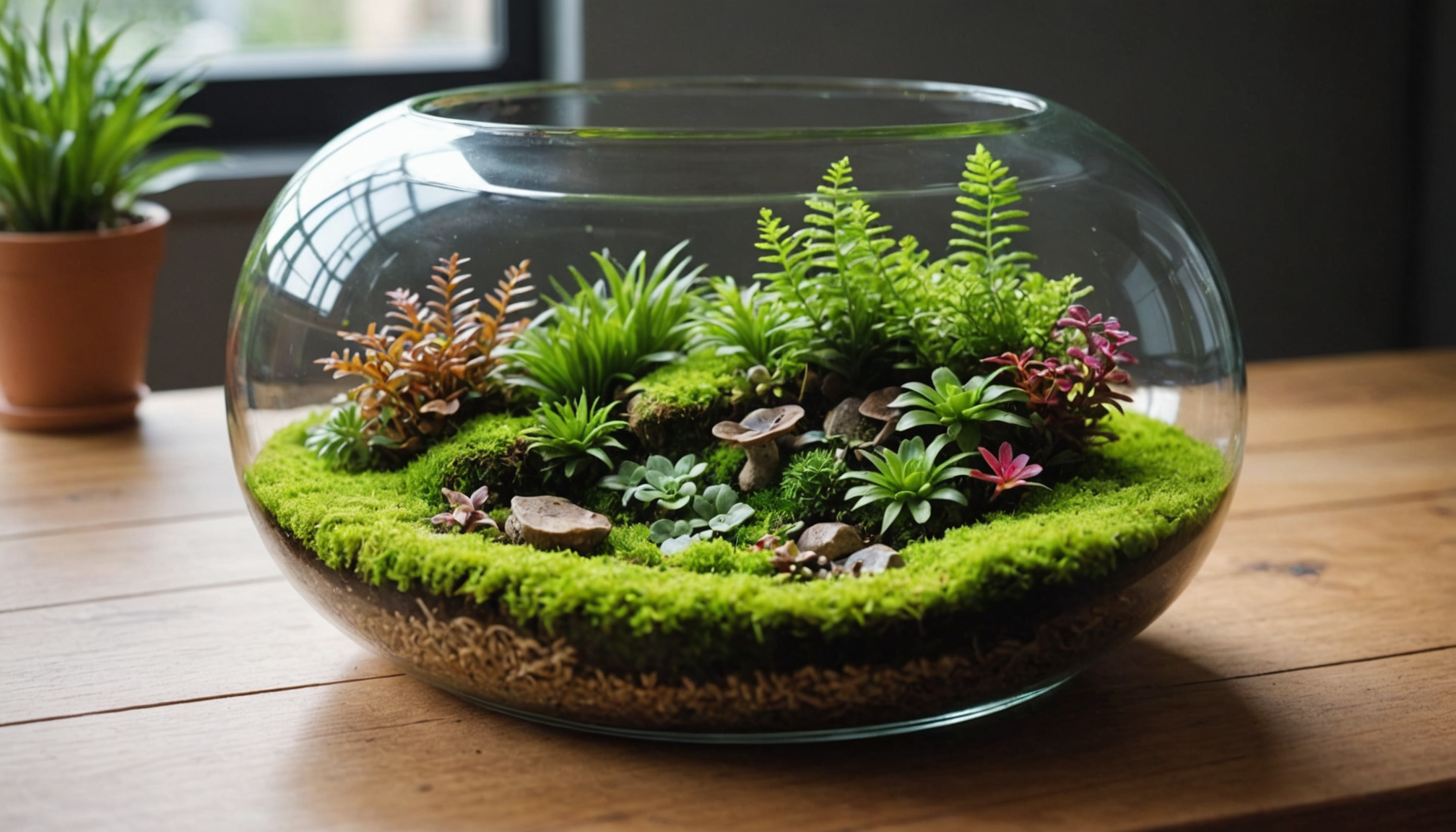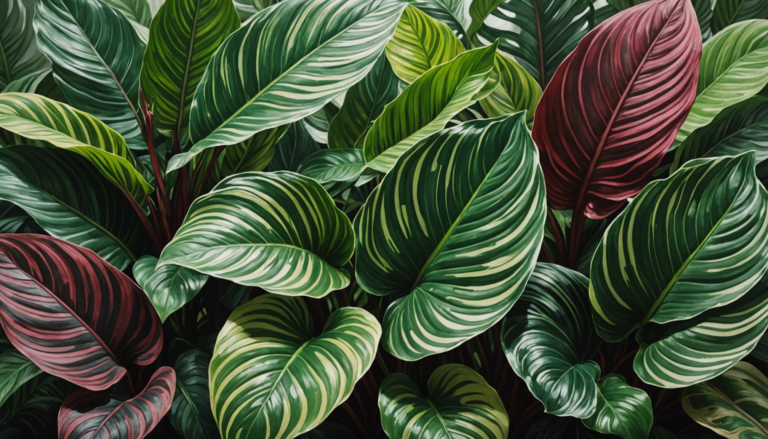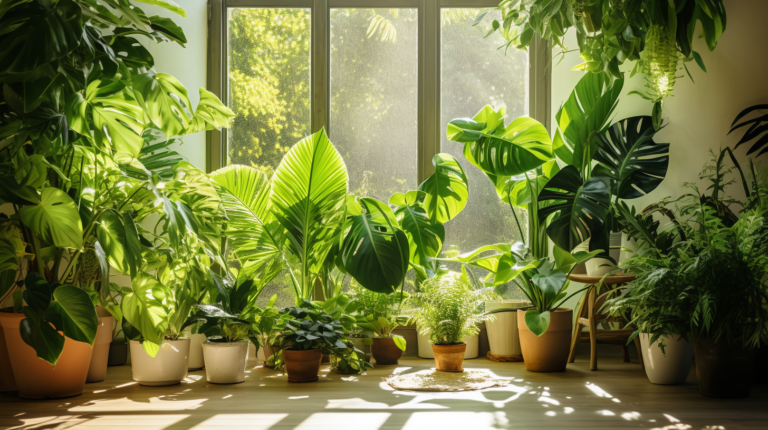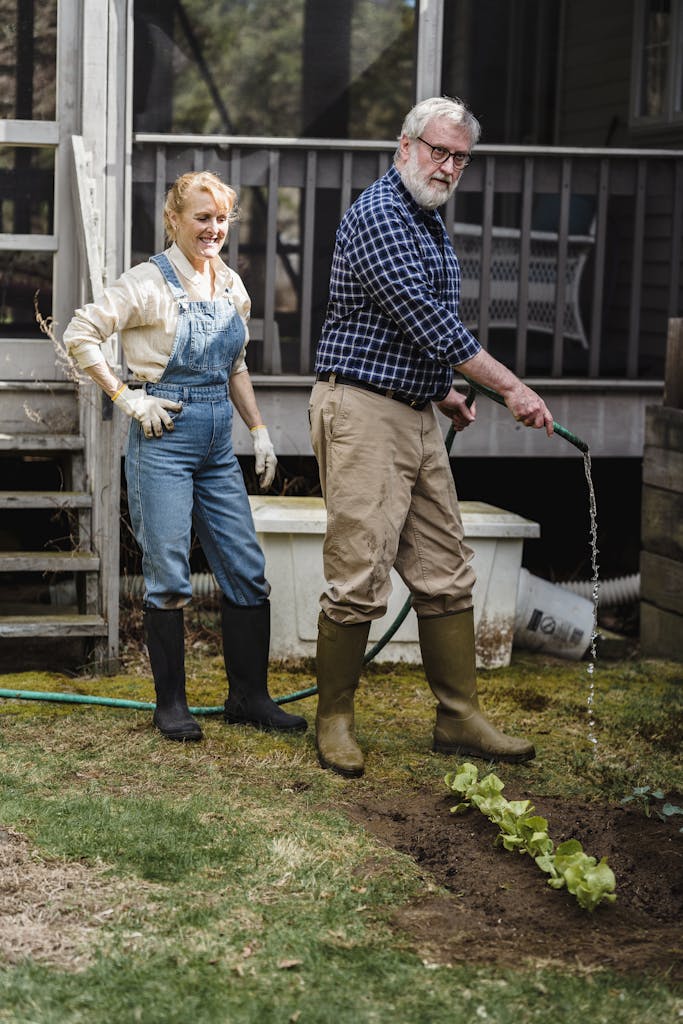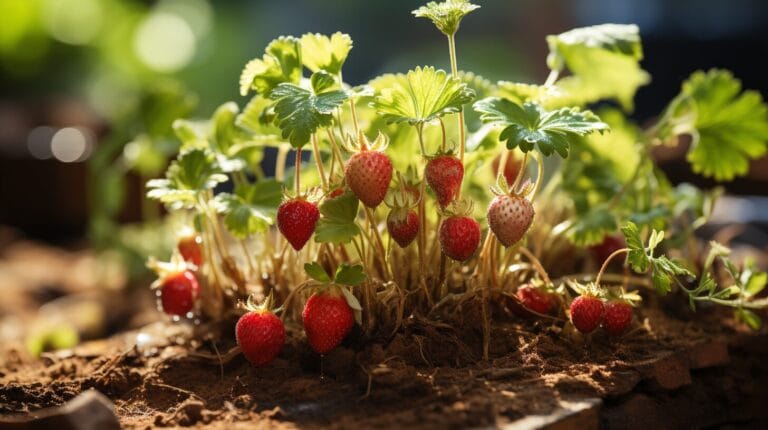Have you ever imagined creating your own mini forest right inside your home? Learning how to plant moss in a terrarium can turn that dream into a reality! Moss is not only a fantastic plant for beginner gardeners, but it also helps create a self-sustaining environment where your tiny garden can thrive. If you don’t master the art of planting moss, you might miss out on the joy of watching your beautiful, green landscape flourish.
In this guide, you’ll discover the different types of moss perfect for indoor terrariums, the essential supplies you need, and step-by-step instructions to plant and maintain your moss garden. Plus, we’ll share creative ideas to make your terrarium a stunning piece of living art! Get ready to dive into the wonderful world of moss and create a vibrant, green oasis right at home!
Understanding Moss Varieties for Your Terrarium Ecosystem
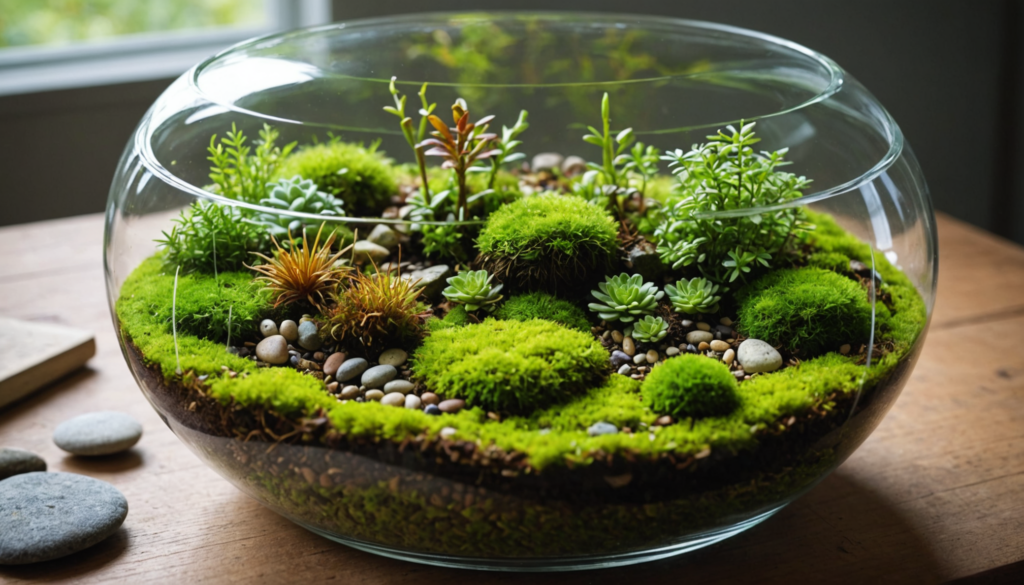
Different Types of Moss for Indoor Terrariums
Common moss types include:
- Sheet Moss (Hypnum): This species spreads flat over surfaces, creating a lush green carpet that effectively covers the soil and provides a smooth, even texture.
- Cushion Moss (Leucobryum): Known for forming dense, soft mounds, Cushion Moss adds depth and dimension to your terrarium, making it ideal for visually interesting clusters.
- Sphagnum Moss: This type holds water exceptionally well, helping maintain consistent moisture levels within the terrarium. It can also be used as a top layer to retain humidity.
These moss varieties enhance the aesthetic appeal of your terrarium while contributing to a self-sustaining ecosystem by maintaining moisture and air circulation. (Mortonarb, Terrarium Tribe)
Why Moss Creates a Self-Sustaining Ecosystem
Moss plays a crucial role in maintaining a balanced environment within a terrarium:
- Moisture Regulation: Moss absorbs water through its leaves and releases it slowly, ensuring the terrarium remains humid.
- Air Circulation: Its structure creates air pockets that promote airflow, which is vital for preventing mold and algae growth.
- Natural Filtration: Moss helps filter the air within the terrarium, contributing to a healthier environment for all plants and organisms present.
With these attributes, moss creates an ideal habitat that thrives with minimal intervention. (Happy House Plants,
Selecting the Right Moss for Your Climate and Light Conditions
Choosing the right moss species is essential for success in your terrarium:
- Light Requirements:
- Sheet Moss thrives in low light, making it perfect for shaded areas.
- Cushion Moss tolerates slightly brighter conditions but still prefers indirect light.
- Humidity Needs:
- Most moss varieties require high humidity; ensure your terrarium maintains moisture to support their growth.
Selecting appropriate moss based on these factors will help create a lush indoor garden that flourishes over time. (Highlandmoss, The Bio Dude)
Essential Supplies to Create a Moss Terrarium
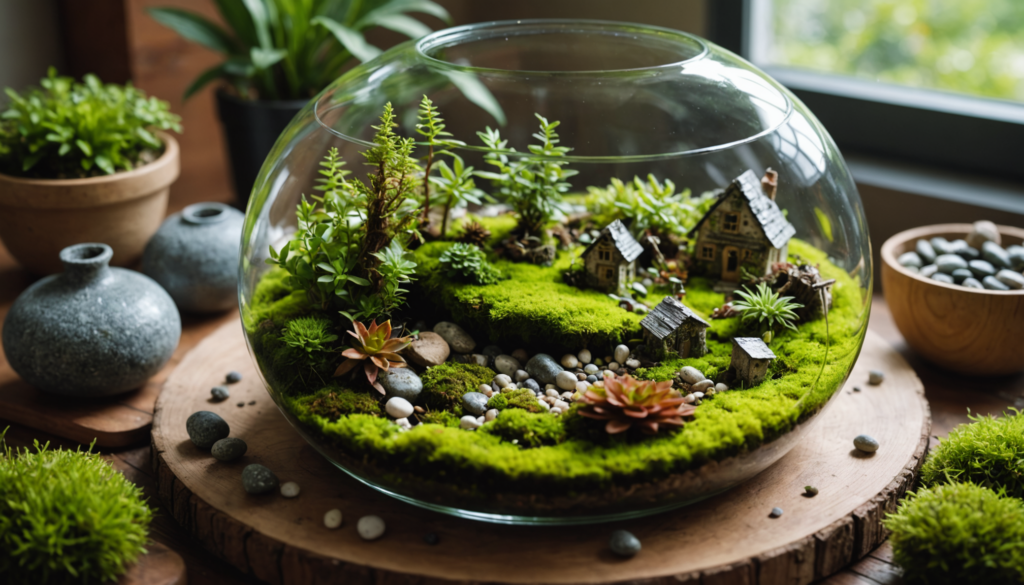
Choosing the Perfect Container for Your Miniature Garden
The container you select is crucial for your moss terrarium’s health:
- Material: Glass containers are preferred as they allow light penetration and visibility into the ecosystem.
- Size: Choose a container that provides enough space for moss to spread without overcrowding.
- Drainage: Ensure your container has drainage holes or use a breathable lid to prevent excess moisture buildup and promote airflow.
A well-chosen container helps maintain optimal conditions for moss growth while allowing you to enjoy the visual beauty of your terrarium.
Substrate and Drainage Materials You’ll Need
A suitable substrate is vital for healthy moss development:
- Base Layer: Start with small stones or pebbles to create drainage, preventing water from pooling at the bottom.
- Activated Charcoal: Add a thin layer above the stones; this helps filter impurities and prevents odors from developing.
- Soil Layer: Use a well-draining potting mix specifically suited for moss. This balanced mixture ensures proper nutrients while maintaining moisture levels.
This combination of layers creates an ideal environment for moss, allowing it to thrive in your terrarium.
Decorative Elements to Enhance Your Indoor Nature Display
Adding decorative elements can elevate the visual appeal of your terrarium. Consider incorporating:
- Natural Accents: Small stones, driftwood, or figurines can create interesting focal points within the landscape.
- Textures: Mixing different materials adds contrast—smooth stones next to rough bark enhances depth.
These elements beautify your terrarium while also providing a natural setting that supports healthy plant growth.
How to Plant Moss in a Terrarium in 8 Simple Steps
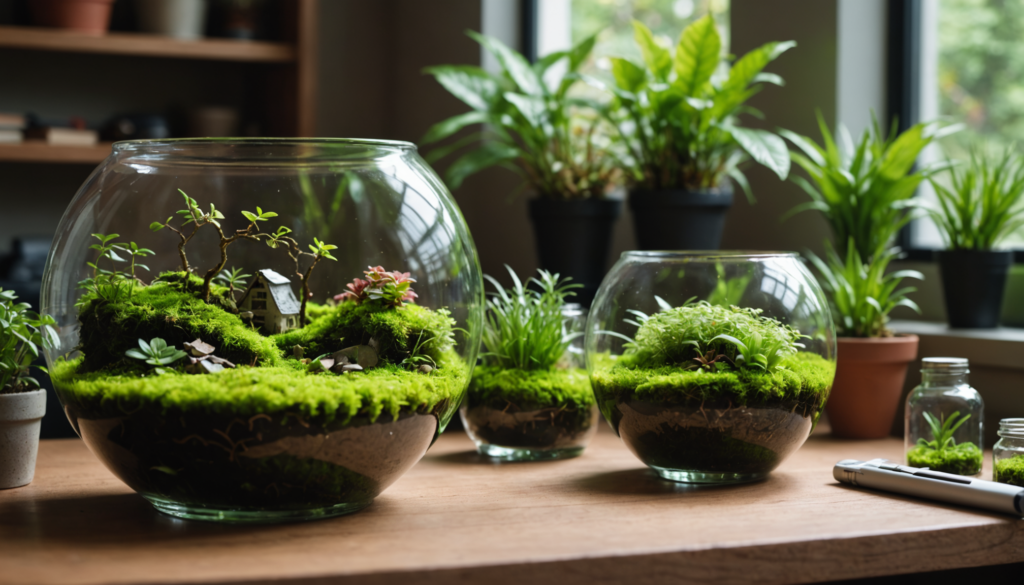
Preparing Your Container and Creating Proper Drainage
Before adding your moss, it’s essential to prepare the container properly to facilitate drainage and prevent issues with excess moisture.
- Clean the glass container thoroughly with clean water.
- Place a layer of small stones at the bottom for drainage.
- Add a thin layer of activated charcoal on top to filter water and prevent algae growth.
Adding Substrate Layers to Support Moss Growth
Creating a suitable substrate is vital for providing the necessary nutrients and moisture that moss needs to thrive in your terrarium.
- Spread an even layer of potting soil over the charcoal.
- Lightly soak the soil with tap water or distilled water to ensure consistent moisture without overwatering.
Moss Placement and Arrangement Techniques
Properly placing and arranging your moss is key to achieving an attractive and functional terrarium that mimics a natural environment.
- Gently remove moss from its pack, keeping roots and leaves intact.
- Press the moss onto the soil, ensuring good contact.
- Arrange 3-4 varieties to create a dynamic, miniature forest look.
How to Maintain Your Moss Terrarium Long-Term
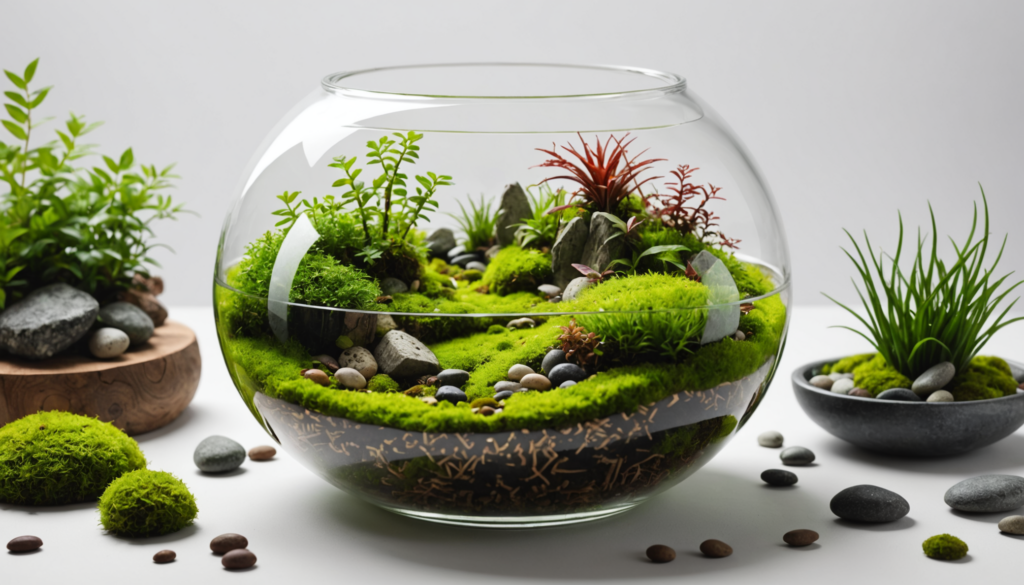
Proper Light and Temperature Requirements
Moss thrives in low-intensity, indirect light in environments kept at 60–75°F (15–24°C). This temperature range prevents dry conditions and brown patches on leaves. Ensure that the terrarium is not placed near direct sunlight, as this can cause excessive heat and harm the moss.
Watering Schedule and Humidity Control
Mist the terrarium with clean or distilled water every 2-3 weeks or when the moss appears dry. Regular checks ensure that excess water does not accumulate, which could lead to mold growth. Maintaining a humidity level of around 60-80% will support healthy moss development and overall terrarium health.
Troubleshooting Common Problems
Look for signs of overgrowth or dry spots. Adjust light levels and water volumes as needed to fix issues such as algae growth or brown patches. If you notice a foul odor, it may indicate stagnant water, so check drainage and airflow conditions.
When and How to Trim Your Moss Garden
Use clean scissors to trim overgrown parts of the moss. Regular inspection helps maintain a neat terrarium while promoting healthy growth. Trimming not only prevents overcrowding but also encourages denser moss growth by stimulating new shoots.
Creative Ideas to Enhance Your Moss Terrarium Design
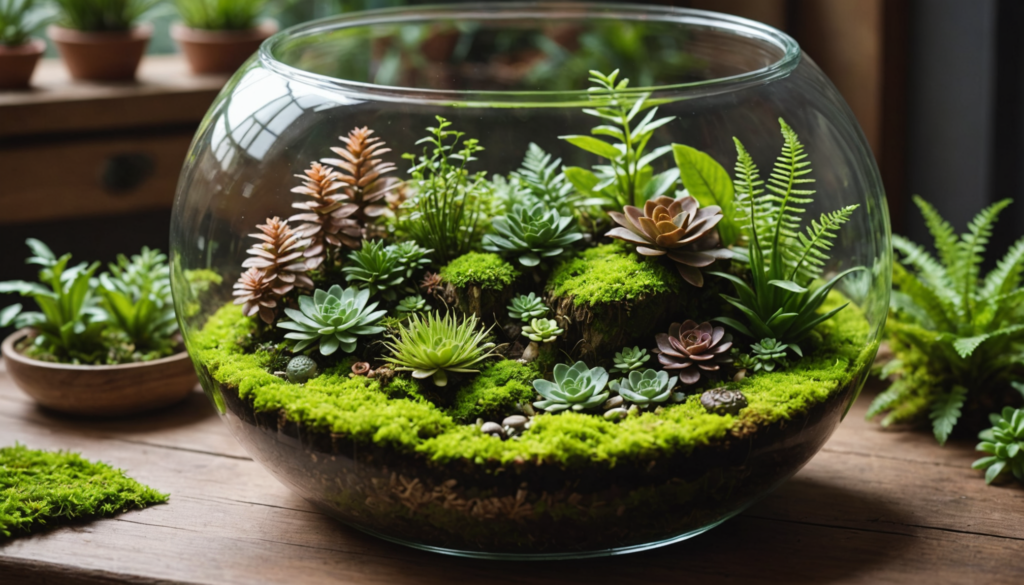
Adding Companion Plants That Thrive With Moss
Consider mixing small ferns or air plants that thrive under similar light and moisture conditions with your moss to enhance the natural look of your terrarium. These companion plants can add variety in texture and color, creating a more vibrant ecosystem.
Creating Themed Moss Terrariums for Different Spaces
Themed terrariums offer creative planting opportunities. For instance:
- A fairy garden can feature moss, small figurines, and playful ornaments.
- A desert scene might combine moss with sand and drought-tolerant succulents.
These themes can reflect personal interests and make excellent conversation starters in any room.
Showcasing Your Terrarium as a Living Art Piece
Arrange moss and companion elements in graceful patterns. Using natural stones as focal points adds texture and visual appeal, transforming your terrarium into a vibrant centerpiece indoors. Consider placing your terrarium on a decorative stand or table to highlight its beauty.
Conclusion
Creating a moss terrarium is an enjoyable project that beginners can master with simple steps. A well-built moss terrarium offers a dynamic indoor garden with minimal care, bringing nature indoors beautifully. With the right maintenance and creativity, your moss terrarium can flourish for years, providing a soothing green space in your home.
FAQ:
1. What types of moss are best for indoor terrariums?
Common moss types suitable for indoor terrariums include:
- Sheet Moss (Hypnum): Spreads flat, creating a lush carpet.
- Cushion Moss (Leucobryum): Forms dense mounds for visual interest.
- Sphagnum Moss: Holds water well, aiding moisture retention.
These varieties enhance aesthetics and contribute to a self-sustaining ecosystem.
2. How do I maintain my moss terrarium over time?
To maintain your moss terrarium, follow these guidelines:
- Light and Temperature: Keep in indirect light and maintain a temperature between 60–75°F (15–24°C).
- Watering Schedule: Mist every 2-3 weeks or when moss appears dry. Aim for a humidity level of 60-80%.
- Trimming: Regularly trim overgrown moss with clean scissors to encourage healthy growth and prevent overcrowding.
3. Can I add other plants to my moss terrarium?
Yes, you can enhance your moss terrarium by adding companion plants like small ferns or air plants that thrive in similar conditions. These plants can provide variety in texture and color, enriching the overall ecosystem.

